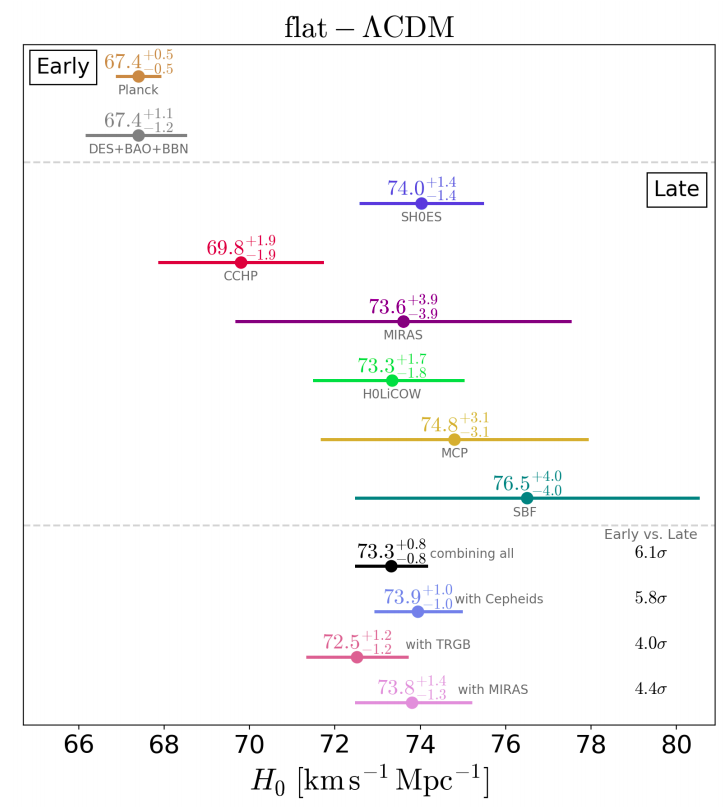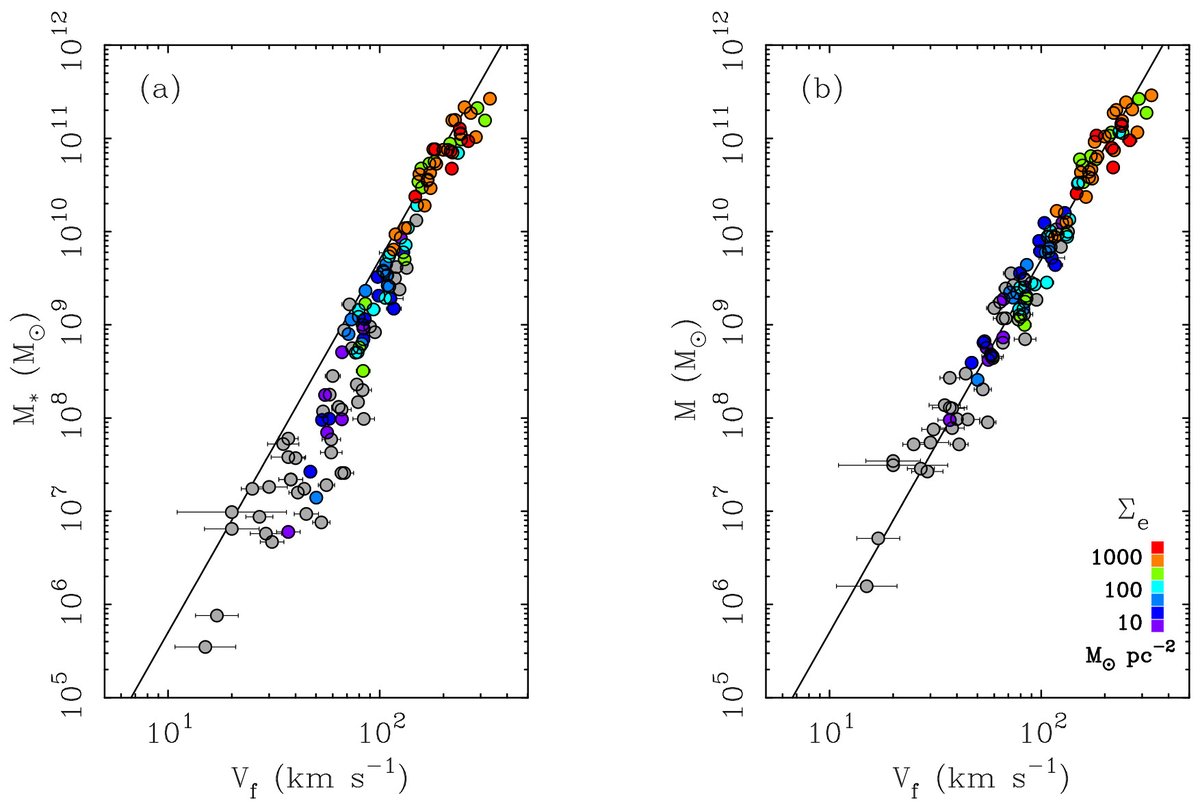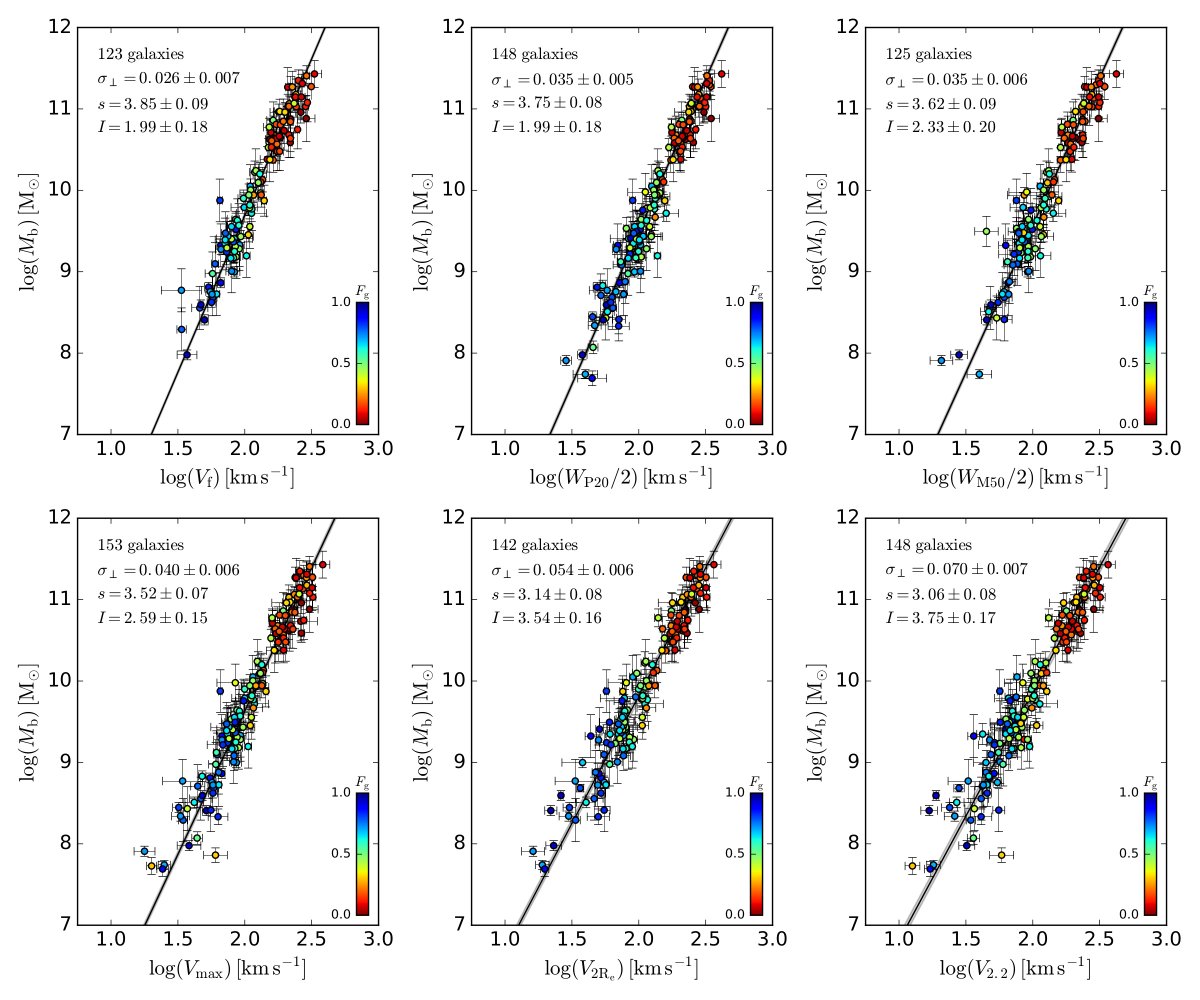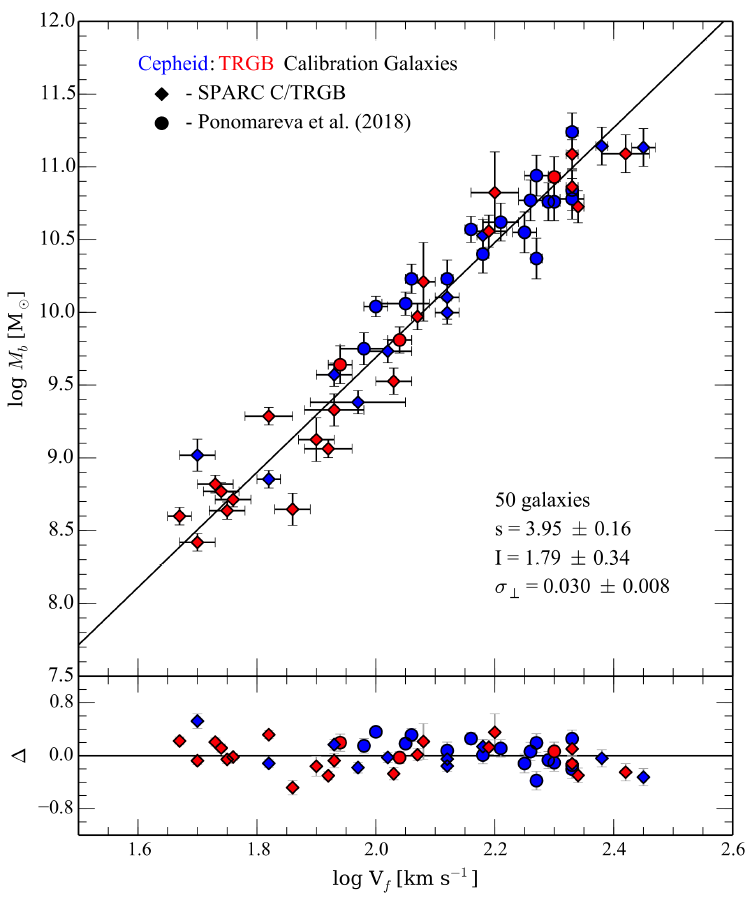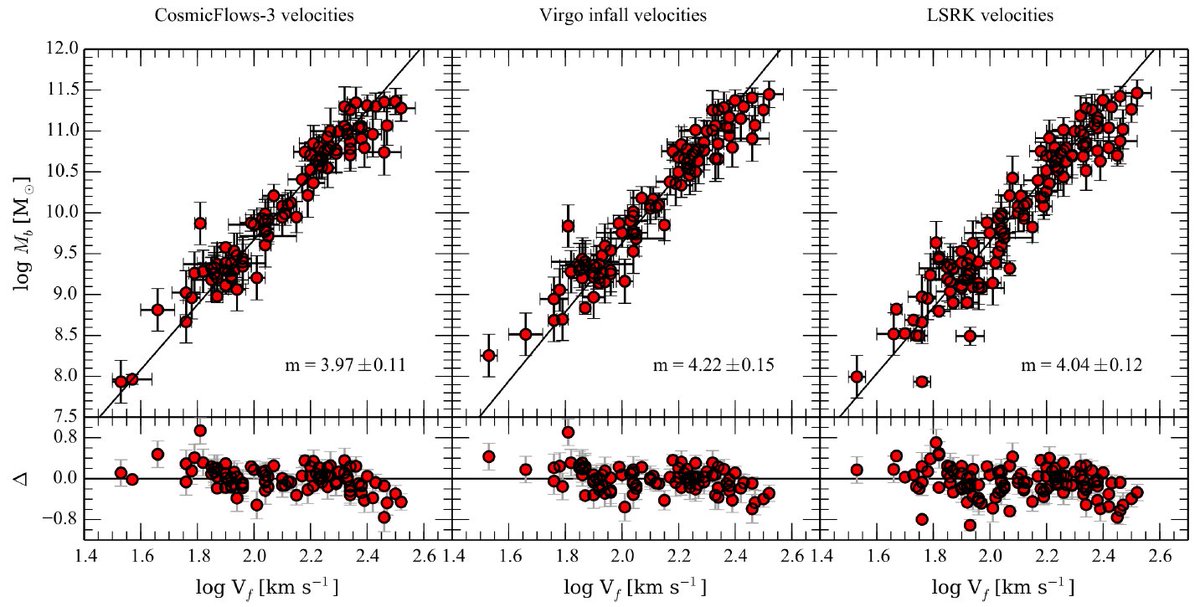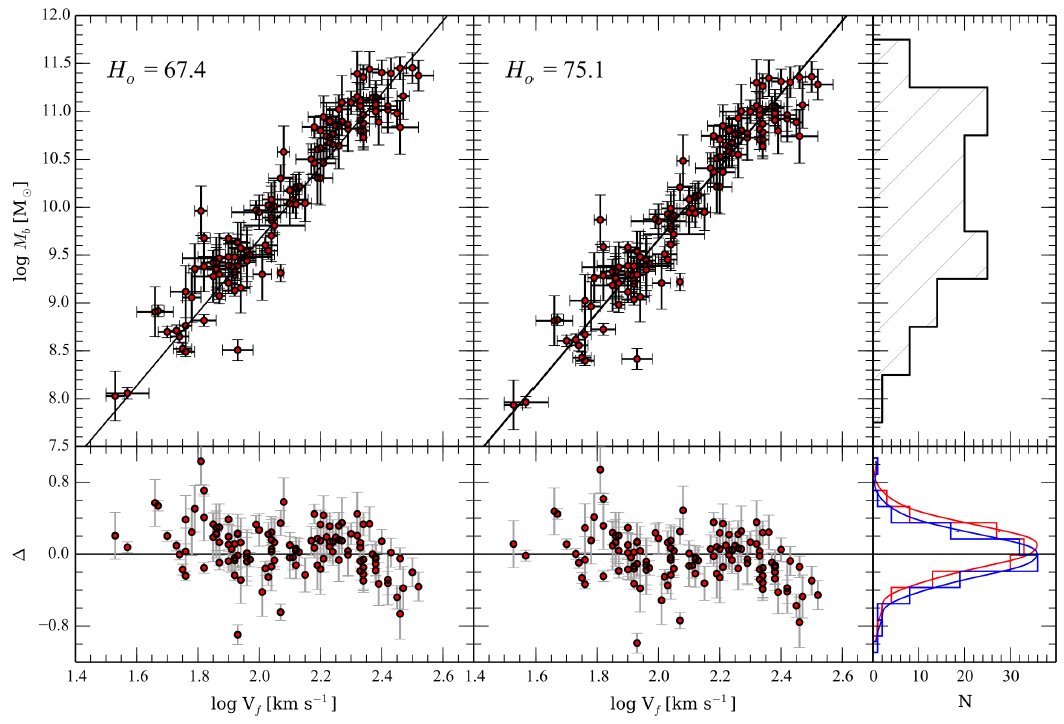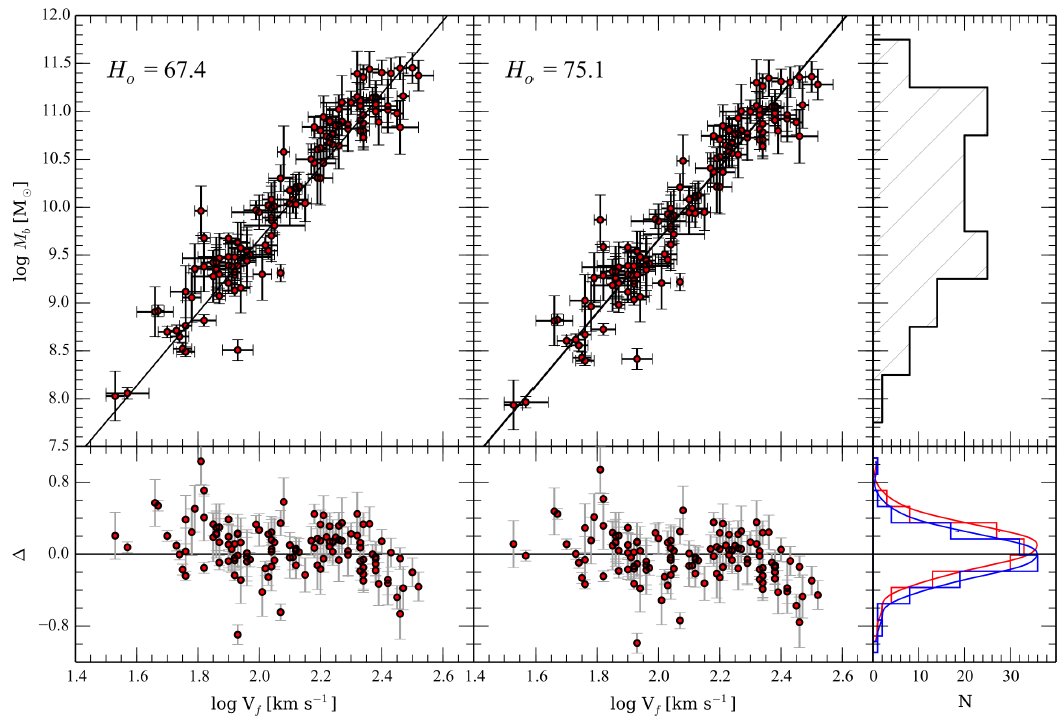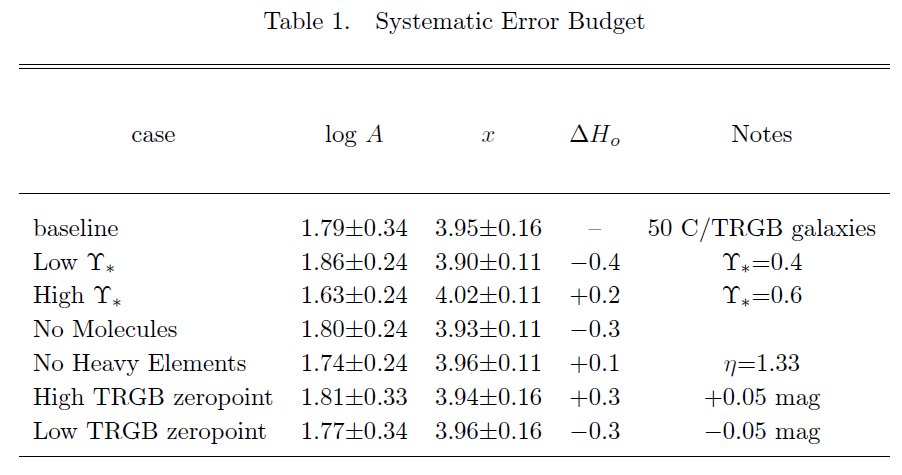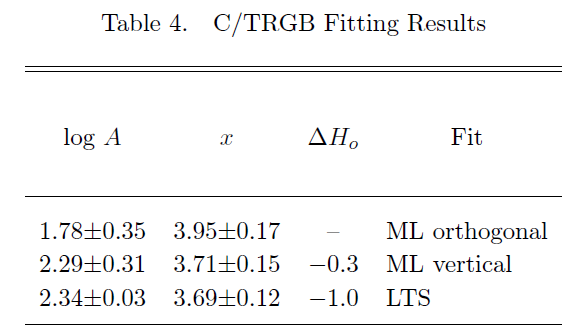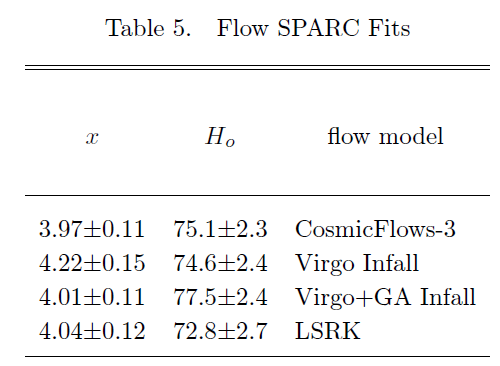Paper day: "Using the Baryonic Tully-Fisher Relation to Measure H0" by James Schombert, @DudeDarkmatter, and myself. Accepted for publication in AJ.
Read it here: https://arxiv.org/abs/2006.08615
SPOILER ALERT: H0=75.1 +/- 2.3 (stat) +/- 1.5 (sys) km/s/Mpc.
Read it here: https://arxiv.org/abs/2006.08615
SPOILER ALERT: H0=75.1 +/- 2.3 (stat) +/- 1.5 (sys) km/s/Mpc.
Background: the Hubble Constant (H0) measures how fast the Universe expands today (z=0). Arguably, this is the most fundamental quantity of our cosmological model. Back in the 70s-80s there was the first Hubble War (hereafter: HWI) between values of 50 vs values of 100 km/s/Mpc.
The classic Tully-Fisher relation, linking the luminosity of a galaxy (depending on distance as D^2) to its HI linewidth (a proxy for the rotational speed, independent of D) played a key role to end HWI (a bit like the USA in WWI) giving H0~70-80 (Tully & Fisher 1977; Sakai 2000)
Recently a new Hubble War has started (HWII). Predictions based on LCDM cosmological fits to the CMB give H0=67.4 with a tiny error of 0.5. Direct measurements give values above ~70 depending on the author. The tension is surely above 4 sigma as shown in this plot from Verde+2019
In our paper we explore the use of the baryonic TF relation (BTFR) to measure H0. BTFR is similar to the classic TF relation but likely more fundamental: on the y-axis we have the total baryonic mass (stars+gas) rather than luminosity. This gives a tighter relation at low masses.
The x-axis of the BTFR is also important: instead of using the HI linewidth from spatially unresolved data, we use the mean velocity along the flat part of the rotation curve from spatially resolved HI obs. This also gives a tighter BTFR (see Lelli+2019) so higher accuracy in H0.
The first step is to calibrate the BTFR using galaxies with known distances. Here we build upon previous, excellent works: Tully+2019 for D using the tip magnitude of the red giant branch, and Bhardwaj+2016 for D using the period-luminosity relation of Cepheids. We get this:
Cepheids (C) and tip of the red giant branch (TRGB) give a consistent BTFR. If there were a systematic mismatch between the two, blue and red points should show an offset. ALSO: if there's any problem with the zeropoint calibration, it must affect C and TRGB by a similar amount.
Second step is to consider galaxies without direct distances. We have 95 with well measured Mbar and Vflat. Since most of these galaxies are nearby (D<50 Mpc), we need to pick a flow model to relate the observed systemic velocity to the cosmic expansion velocity. We tried a few.
For a fixed flow model, we can pick an arbitrary H0 value, calculate D, and compare the resulting BTFR (points) to the BTFR from C/TRGB calibrators (solid line, independent of H0 or flow models). Left is what you get by assuming Planck's H0, right by minimizing the residuals.
The Planck value can be ruled out by eye: points are systematically above the solid line. But if you like statistics and run a t-test, you can reject that value at 99.98% confidence. The story could end here, but everyone's nightmare are systematics, so I need a few more tweets.
This table shows the systematics due to our assumptions in measuring Mbar=Mstar+Mgas, as well as a possible systematic difference between Cepheids and TRGB zeropoint calibrations. Without entering in too many details (read the paper!): these effects are reasonably small.
This table shows systematics due to the fitting method. YES: fitting a line to data is NOT trivial. But the effect on H0 is small. For the Bayesian maximum-likelihood (ML) methods, Harry Desmond and myself wrote an easy-to-use python-3 code available here: http://astroweb.cwru.edu/SPARC/

 Read on Twitter
Read on Twitter